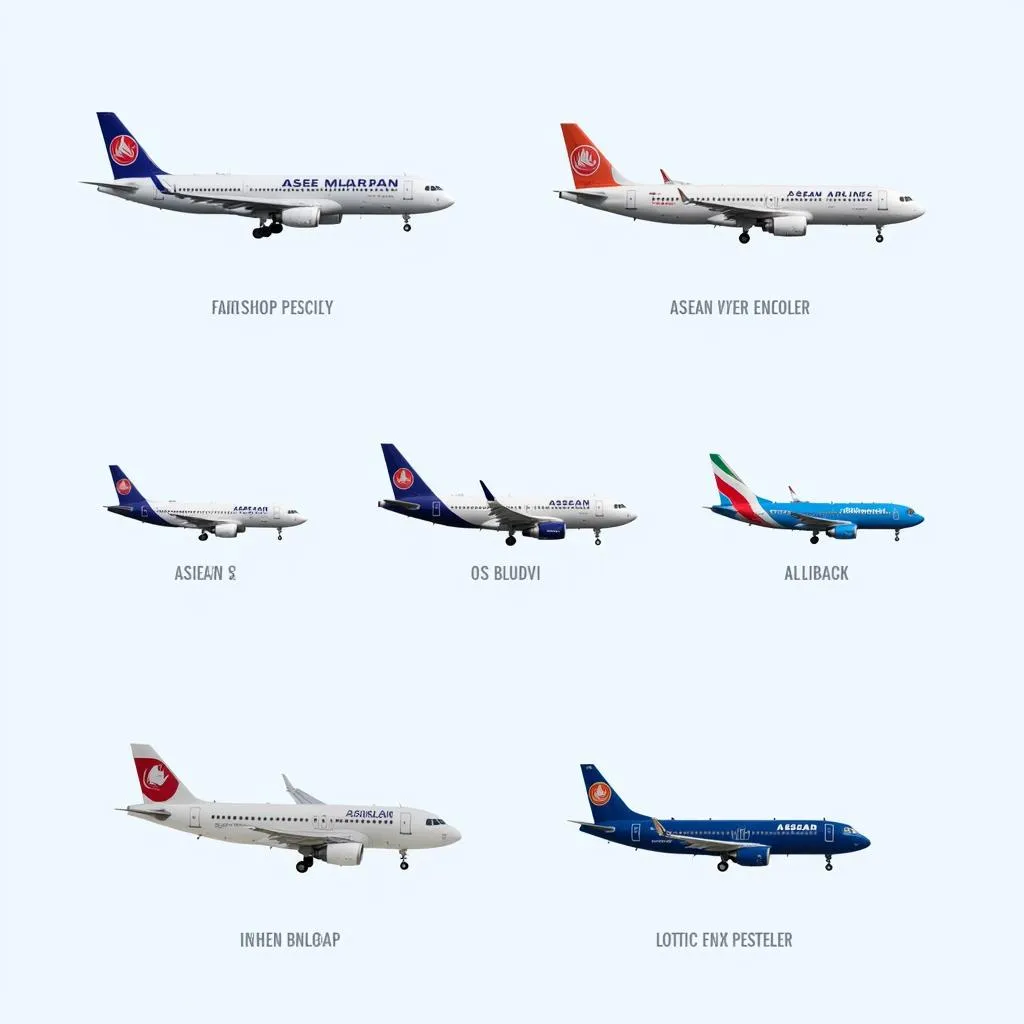The ASEAN region, with its dynamic economies and burgeoning tourism industry, is witnessing a surge in air travel. This has led to a growing demand for aircraft, making ASEAN a key player in the global aviation market. But what exactly are “ASEAN aircraft,” and what impact are they having on the region?
Understanding the Rise of ASEAN Aircraft
While there’s no singular entity called “ASEAN aircraft,” the term refers to the collective aircraft fleet operated by airlines based in the ten ASEAN member states. This includes a diverse range of aircraft, from narrow-body jets used for regional routes to wide-body aircraft connecting Southeast Asia to the world.
 Diverse Fleet of ASEAN Airlines
Diverse Fleet of ASEAN Airlines
Key Players in the ASEAN Aircraft Market
Several factors contribute to the growth of the ASEAN aircraft market:
- Economic Growth: ASEAN nations are experiencing robust economic growth, leading to increased disposable income and a growing middle class with a higher propensity for air travel.
- Tourism Boom: Southeast Asia is a global tourism hotspot. The influx of tourists necessitates a robust aviation sector to facilitate their travel within and beyond the region.
- Liberalization of Airspace: ASEAN has been actively working towards liberalizing its airspace, allowing for greater competition among airlines and driving down airfares, making air travel more accessible.
 Passengers Boarding an ASEAN Airline
Passengers Boarding an ASEAN Airline
Impact of ASEAN Aircraft on the Region
The rise of ASEAN aircraft has had a profound impact on Southeast Asia:
- Connectivity and Integration: Increased air connectivity fosters greater integration within ASEAN. It facilitates trade, tourism, and people-to-people exchanges, strengthening regional ties.
- Economic Benefits: The aviation industry is a significant contributor to ASEAN economies, generating employment opportunities in airlines, airports, and related sectors.
- Tourism Growth: Improved air access makes ASEAN destinations more appealing to tourists, boosting tourism revenue and supporting local businesses.
Challenges and Opportunities
While the future of ASEAN aircraft appears bright, challenges remain:
- Infrastructure Development: The rapid growth in air traffic necessitates continuous investment in airport infrastructure and air traffic management systems to ensure efficiency and safety.
- Environmental Concerns: The aviation industry’s environmental footprint is a growing concern. ASEAN airlines face the challenge of adopting sustainable practices to mitigate their impact.
 Sustainable Aviation Fuel in ASEAN
Sustainable Aviation Fuel in ASEAN
Conclusion
“ASEAN aircraft,” though not a literal term, represents the dynamism and growth of the aviation sector in Southeast Asia. As the region continues its economic ascent, the demand for air travel is only set to soar higher, further solidifying ASEAN’s position as a major player in the global aviation landscape.
